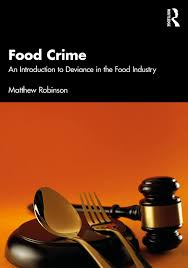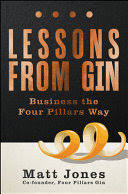How to Prevent Your Hoses from Compromising the Quality of Your Food

Image courtesy of Parker Hannifin
Food contamination from any source is not a topic to be taken lightly, as food safety is a top priority for manufacturers, customers and approval agencies. Compromised food quality can be the result of many causes—from machine design to a lack of employee training to a lack of testing of ingredients. No stone should remain unturned when it comes to ensuring the integrity of food quality, and this includes a careful inspection of all components in your food processing operation. Even before that, an important step is to specify the right components from the start—including your hoses.
Unique Challenges for Food-grade Hoses
In any application, whether it’s in the food and beverage industry or a completely unrelated industry, hoses take a lot of abuse. They may be transporting media at extreme temperatures or pressures. They might be getting dragged around the facility and suffering from abrasion and other forms of stress. That’s just reality.
Food-grade hoses, however, present even more challenges—primarily because of the higher standards to which they are held. They are ultimately responsible for preserving the integrity of the food being transferred. That means preventing contamination or exposure to any foreign elements. Properly specifying and maintaining food-grade hoses is what gives you and your customers the confidence that you are transporting a clean product that can safely be consumed or delivered to the next phase of the production process.
In addition, food-grade hoses are often subject to more aggressive cleaning and sanitation processes, which opens the door to concerns relative to chemical compatibility, hose degradation and premature failure.
Specifying the Right Hose for Your Food or Beverage Application
There is almost an endless number of applications within just the food and beverage processing industry—from dairies to distilleries to grain silos to packaged foods and everything in between. That’s why there are so many hose variations on the market to meet customized product requirements. Such variety makes specifying the right hose and hose assembly a much more difficult, yet important, task.
To make it easier to remember the most important considerations, we at Parker like to use acronyms. In the case of hoses, the acronym to remember is STAMP, which stands for size, temperature, application, media and pressure. Within these categories, there are a number of important questions to ask, such as the amount of flexibility required, any weight restrictions, the need to be fat- and/or oil-resistant or abrasion resistant. Will the hose need to be clamped down or will it be mobile? What type of equipment will come into contact with the hose? Is it a problem if the hose leaves marks on the floor when it’s moved?
When looking at hose construction, there are three main parts: the inner tube, reinforcement and hose cover. The inner tube material must be compatible with the material being transferred because you don’t want the hose to break down.
The reinforcement of the hose can be metal or textile. The chosen reinforcement dictates pressure capabilities, kink resistance, strength and the weight of hose. It is also key for pressure design and helical wires for vacuum-rated hoses.
Choosing the right hose cover is also important, as there are many choices, and the cover affects abrasion and wear resistance and even sunlight degradation.
In the food and beverage industry, the most commonly used materials are rubber or PVC. Parker’s new PURE Food and Beverage line of hoses, for example, is made of rubber because it’s more robust, performs better at high and low temperatures, and it’s ideal for high-pressure applications. It’s also generally more flexible and offers a longer service life.
PVC also has its place in the food and beverage industry in more limited applications since it is not as flexible when used with lower temperatures. PVC is also known to lose its integrity at high temperatures and is more likely to kink. It is additionally lighter in weight, which can be good or bad, depending on how it is used.
Other Considerations
So far we’ve only touched upon a small percentage of questions to ask when determining what type of hose is best for your food processing application. Other considerations include:
Chemical and material resistance
No single hose material is right for every application. Metal components, for example, are susceptible to corrosion, which leads to contamination. Rubber, on the other hand, offers inherent resistance to corrosion.
Hoses should also be made from non-toxic compounds to ensure there is no migration of anything potentially hazardous. The bottom line is that hoses should not transfer any smells or tastes to the product being conveyed, even if they’re not toxic.
Some hoses, depending on the application, can be cleaned and used again and again as a money saver. But the hose material chosen must be able to stand up to all the chemicals used in the washdown process. Start by consulting a chemical compatibility chart which should be available through your supplier. Assuming you’ve chosen the right partner with deep technical expertise in chemical compatibility, you should be able to rely on their technicians to assist in the final selection. But even then, it’s always a good idea to test the hose product before putting it in full production to ensure no smells or tastes are created.
Flexibility
The flexibility of a hose affects its durability and ease of handling and varies based on the type of plastic or rubber used, as well as the overall construction of the hose. Specific factors to consider when evaluating a hose’s flexibility are its durometer (softness or hardness), force-to-flex, size, wall thickness, reinforcement style and temperature. A lower force-to-flex makes the hose safer and easier to handle. Flexibility is an especially critical factor in situations involving robotics or where tubing is frequently moved.
Kink resistance
You never want a hose to collapse on itself. Some heavy-duty food-grade hoses contain an internal stainless steel or thermoplastic helix to prevent the hose from being crushed or kinked. This is especially important to consider if there are vehicles in the vicinity that might roll over the hose or if the hose has to bend around equipment.
Safety (flammability and anti-friction)
Sometimes applications involve high temperatures or electricity, leading to concerns about fire safety and flammability. Consider what will happen to your hose if it catches on fire. Will it emit fumes? Will it self-extinguish? Is it non-flammable? Remember that a hose with a low coefficient of friction also provides outstanding impact resistance. Friction is especially a concern when working with dry bulk materials, like grains and wheats, which can build up a static charge.
Weight limitations
When calculating the weight of a hose, you need to factor in the tubing, reinforcement and all assembly components. Weight is a concern if the hose could pull on other components or if it needs to be hauled by one person. If it’s stationary and not being moved, consideration should be given to properly mounting it with clamps or other restraints that are rated for the particular weight and length of the hose.
Pressure
Although hoses used in food processing are typically exposed to much lower pressures than in some industrial applications, it’s still important to specify a properly rated hose for your pressure to avoid hoses bursting and causing injury and/or downtime. The pressure rating of a hose is largely dependent on its construction, including the type of reinforcement used. Always conduct tests to ensure your specified hose can handle the pressure of your operation.
This is an area where it pays to have the right supplier with the necessary technical support to help identify the right hose. Pressure ratings are important because they directly impact safety. That’s why most food-grade hoses are rated 3-to-1 or 4-to-1 which means the hose can handle three times to four times the expected working pressure. This is what’s known as the added safety factor.
Temperature
Always check the temperature rating of your hoses against the average operating temperature of the food you’re transporting. Even then, it’s never a good idea to continuously operate a hose at its minimum or maximum thresholds. And it’s not just about the temperature of the material running through, as the temperature of nearby equipment is also a factor.
Location and environment also play a role. If the hose will be operating outside, remember that it will be subject to weather variations. Plus, there is always the potential UV impact to consider if the hose is exposed to sunlight. If the temperatures outside go below freezing, your hose may lose much of its flexibility.
Connections
When it comes to ensuring food quality throughout the process, it’s important to think beyond the hose itself. How the hose connects also affects overall sanitation and total cost. Quick-disconnect hoses, for example, are easy to install and offer a labor savings, but they can fail sooner.
With regard to fitting choices, barb style fittings are often ideal, especially with softer tubing. Clamps are typically also needed with barbed fittings and come in various styles and materials. Hard tubing materials are better suited for push-to-connect and compression fittings since the O-rings and/or the fitting’s surfaces seal the tubing ends more securely for leak-free connections. In the case of a hose assembly with a permanently attached, stainless steel barbed fitting, a collar is typically used.
A crimp is best on hard-wall or soft-wall hoses, but remember that a crimped hose wall can cause a disruption in flow. The addition of a wire helix will resist collapse. Internal expansion is best on soft-wall hoses but is also acceptable on hard-wall hoses. Properly expanded insertions will cause little disruption to the hose wall and a wire helix can act as an internal shell.
Relevant standards/compliances
Today there are lots of governing bodies across markets and applications that set guidelines and standard for food and beverage products. Some of the more common agencies watching over food quality operations are the Federal Drug Administration (FDA), the Good Manufacturing Practice Regulations (FMP), the National Sanitation Foundation (NSF) International for water-based applications, ISO 9001:2015, the US Department of Agriculture (USDA), and US Pharmacopeia (USP).
These organizations and standards apply not just to the product but also the process, plant surroundings, packaging and warehousing.
Conclusion
When it comes to choosing the right hose to prevent potential food contamination, the goal is to meet the highest standards while also lowering the total cost of ownership through attention to quality and safety which minimize downtime and fines. Keep in mind that not all material hose materials perform the same, even if you’re comparing rubber to rubber. Always consider the grade of the material being used, paying special attention to fillers and the compounding process. This is especially important when evaluating the inner tube which comes into contact with the processed food or beverage.
Ask the right questions before making a final decision. Does the hose meet all the necessary industry standards? Does your supplier have a material traceability process in place to ensure the integrity of all materials? Does the hose extract or add any substances, smells or tastes? Does it provide the required suction and kink resistance? Is it designed to be cleaned regularly by standing up to the most aggressive cleaning chemicals?
Food-grade hoses are not inexpensive, so choose wisely to ensure a successful long-term investment. And make sure your chosen supplier has the breadth of products and technical expertise to ensure the success of your operation.Looking for a reprint of this article?
From high-res PDFs to custom plaques, order your copy today!








